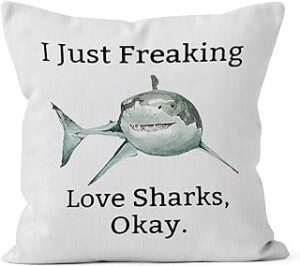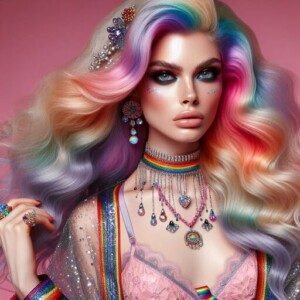It’s all here: the differences in special interests between autistic women and men.
Historically, autism has been perceived through a predominantly male lens, leading to misdiagnosis, under-diagnosis and misinterpretation of features in women.
However, research has increasingly revealed the unique presentation of autism in females, including differences in special interests and obsessions.
Understanding Special Interests and Obsessions
Special interests and obsessions are hallmark features of Autism Spectrum Disorder.
For individuals on the Spectrum, special interests (also known as hyperfixations and fixations) serve as a means of engagement, regulation and self-expression.
These interests or topics of infatuation can bring immense joy, fulfillment and expertise to the individual’s life, but they can also cause issues in social contexts and daily functioning.
In autistic women, special interests and obsessions may exhibit distinct patterns compared to their male counterparts.
While research in this area is still relatively young, several common themes have emerged.
Socially Oriented Interests

©Lorra Garrick
Women with ASD often develop special interests related to social dynamics, interpersonal relationships and human behavior.
These interests may involve analyzing facial expressions, studying social norms or exploring interpersonal communication strategies.
Such interests may reflect a desire to navigate the complexities of social interaction, compensate for social challenges or seek a sense of belonging.
I wonder if my hyperfixation on schizophrenia, during college, would fall under any of these categories.
After all, abnormal psychology is part of human behavior.
Animals and Nature

©Lorra Garrick
Many women with autism exhibit a deep affinity for animals and nature.
This may involve a passionate interest in specific animal species, wildlife conservation or outdoor activities such as hiking and birdwatching.
For some women, connecting with animals may provide a source of comfort, companionship and sensory stimulation, offering a respite from the demands of human interaction.
In adolescence I developed an infatuation with the movie “Jaws” and sharks.
You might be wondering, though, how this would’ve been any different from the infatuation that seemingly half the entire U.S. population had with sharks when “Jaws” came out.
Trust me, it was different. I never lost my interest in sharks, shark attacks and the movie, but after a few years, this special interest gradually transitioned into a “neurotypical-grade” interest, and it remains that way today.
And there IS a big difference! The interest I have today (NT-grade) is what half the country had in 1975.
My autistic-grade interest in sharks/“Jaws” had distinct differences.
Creative Pursuits

©Lorra Garrick
Creativity often plays a significant role in the lives of autistic women.
They may demonstrate exceptional talent and passion in artistic endeavors such as painting, writing, music or crafting.
Engaging in creative pursuits allows women on the Spectrum to express themselves, process emotions and communicate in nonverbal ways.
Artistic endeavors can also serve as a form of sensory regulation and self-soothing for women with autism.
I began drawing at around age six. Below is a drawing I did at age six, completely out of my head, despite never having had a single lesson.

©Lorra Garrick
I grew up to be a prolific illustrator, though drawing was never a hyperfixation or obsession.
In short, just because an Autistic is gifted in illustration and other forms of art doesn’t mean that it’s a true special interest – not any more than art is an obsession in an NT who’s gifted in this area.
However, I do believe that excessively doodling in the margins of my notebooks during school classes from grade 1 to 12 was a form of stimming. Not surprisingly, some of the doodling included realistic drawings of sharks.
With that all said, many autistic women have intense preoccupations in the arts.
Fictional Worlds and Fantasy

©Lorra Garrick
Autistic women may develop intense interests in fictional worlds, fantasy literature or imaginative play.
These interests may involve immersive exploration of fictional universes, role-playing games or fan communities centered around books, movies or a TV show.
Engaging with fictional narratives can provide a sense of escapism, creativity and intellectual stimulation for women on the Spectrum.
Hmmm… I developed an intense interest with the 1970s TV series, “The Incredible Hulk.”
I’d definitely say that it had crossed over into the realm of autistic-grade.
At that time, I had eagerly got ahold of a Hulk comic book and was deeply disappointed that the cartoon version looked nothing like the Lou Ferrigno version.
In fact, the cartoon version even talked: full verbal skills. What a big let-down.
I also have a rich inner world that I often visit and participate in.
Usually, I’m a movie star in this fictitious universe, but may also be a TV series star or an elite athlete.
Many neurotypicals also have a sizzling inner world, but I’d say that the frequency with which I immerse myself in mine sets it apart from those of NTs.
Specialized Knowledge Areas

©Lorra Garrick
Some women with autism exhibit a remarkable capacity for acquiring and retaining specialized knowledge in specific domains.
These interests may encompass fields such as science, history, math or technology.
Immersing themselves in these areas allows individuals to delve into complex systems, patterns and problem-solving challenges, often leading to expertise and innovation.
The special interest component of my lifelong passion for physical fitness is the treadmill: DON’T HOLD ON (if you’re able-bodied).
Don’t get me started …I’ll nail you to the wall with all the reasons why holding on is a saboteur.
Socially Acceptable Special Interests

©Lorra Garrick
Another distinction between the special interests in autistic men/boys and those of autistic women/girls is that the fixations among females are much more often socially acceptable.
Examples would be arts and crafts, reading, writing, a band or solo pop star, a classic movie, a classic novel (in my case it was “The Hunchback of Notre Dame” and “Of Mice and Men”), a music genre, videogames and “girlie” things such as butterflies, flowers, houseplants, angels and cake design.
But not all autistic women have only socially acceptable special interests.
Other SPINs of mine have included real-life wood chipper deaths, facial disfigurement, feral children, seizures from boxing knockouts, heavy gravity planets that evolved humanoids, mental hospitals and comas.
The Challenges of Autistic Special Interests
While special interests and obsessions can enrich the lives of autistic women, they may also present challenges in various contexts.
Social Isolation
Intense preoccupations can sometimes lead to social isolation, as individuals may struggle to connect with peers who don’t share their interests.
Women on the Spectrum may find it challenging to engage in small talk or navigate social gatherings that do not revolve around their special interests.
That is so true. I find typical small talk boring, always have. I had always wished that someone at a social event or on the job, even just one person, shared my enthusiasm for the many “weird” or esoteric topics that I was intrigued by.
Executive Functioning
Special interests may interfere with executive functioning skills such as time management, organization and prioritization.
People may prioritize their interests over daily responsibilities, leading to difficulties in maintaining routines, completing tasks or transitioning between activities.
Not all Autists, though, get so lost in their SPINs that it disrupts completing the tasks of daily living or important projects.
Multiple variables are at play here, such as upbringing and whether or not the Autist also has ADHD.
But there was definitely a day during college when I spent too much time in the library reading up on heavy gravity experiments with chickens (they were placed in a centrifuge) when I should’ve been studying for a semester final exam. I ended up way behind in my studying.
This occurrence, at the time, masqueraded as lack of discipline. I now know what it was!
At the library, it had been exceedingly difficult for me to pull away from the book I was reading on “chronic acceleration” of animals — spinning them around in a centrifuge at high gee forces — to go to my dorm room and study for that exam.
And I’ve dropped home-based legal proofreading jobs on a dime to dash outside to find out where the sudden sound of a wood chipper was coming from – going as far as driving around the neighborhood to locate it (those things are friggin’ loud!), while a ton of pages needed to be proofread with a tight deadline. Yep, that’s an autistic-grade special interest alright!
Stigmatization
Society’s perception of certain interests, particularly those deemed unconventional or eccentric, may contribute to stigmatization and social ostracism for autistic women.
Misunderstandings or negative stereotypes surrounding their interests can exacerbate feelings of alienation and marginalization.
The Benefits of Autistic Special Interests

Autistic people don’t set out to find the next obsession. Instead, it finds them.
For example, if I were to go back to the spring of my 12th year via time machine, as my adult self, and tell my 12-year-old self, “In just a few months, you will be thinking about sharks all the time and wanting to talk about them,” my preteen self wouldn’t have believed it for a second.
Fifteen years ago, if a time traveler would have told me, “In a few years, whenever you see someone’s big poofy ponytail in public, you will get very excited and you’ll just want to keep staring at it and long to feel it,” I would’ve thought they were nuts.
Special interests choose us. They may last a few weeks to decades.
As previously mentioned, the special interests of autistic women can go unnoticed if they are more socially acceptable topics, such as a TV show, a female celebrity, an artsy hobby, eye makeup and collecting turtle figurines.
Autistic males, more so than females, tend to develop hyperfixations on unusual or “manly” topics, such as train whistles, washing machines, phone poles, serial numbers on cameras, shipwrecks, hurricanes and videos of insects fighting, to name a few.
But truth be told, I’ve read in an autism community thread of a woman who at age 10 became obsessed with canals, and another as an adult who was mesmerized by power strips.
#1 Monetizing a Special Interest
Spending time with one’s SPIN can boost a woman’s self-confidence and generate expertise in the subject if it’s something she can read up a lot on.
A hyperfixation can also lead to a job, such as at a natural history museum if the SPIN is dinosaurs.
Or it can lead to a side hustle such as crafting jewelry and selling it online.
#2 Sleep Aid
Another benefit is that of immersing oneself in the infatuation to provide a sense of predictability, control and comfort during tense situations.
I’ve noticed that if I waken in the middle of the night and begin feeling anxiety over things going on in my life, I have a tendency to, while continuing to lie in bed with my eyes closed, spell out female names in many different phonetic ways.
I view the spellings inside my head: KristaKae, KhristaCaye, Christa‘Cae, Christa-Kay, Crista Cay, Cristta-Kaye.
Or, I will conjure up images of spellings of a fictitious family: All the kids have names that begin with K-O, as in Kolbie, Kody, Kolton, Konnor, Kortni, Korrey, Kole and Kolette.
This all helps put me at ease and helps me fall back to sleep.
Needless to say, I’ll do this even upon first getting into bed if I’m struggling to fall asleep. I’ll tinker back and forth with Kazzandra and Cazzandra, wondering which one looks cooler.
#3 Opportunity for Socializing
Shared interests can facilitate social connection and community engagement for women with autism.
Participating in interest-based groups, clubs or online forums allows individuals to connect with like-minded peers (even if most are neurotypical), creating the potential for friendships and supportive relationships.
Final Thoughts
Yes, it’s accurate to say that in general, there are differences between the special interests of autistic women and autistic men.
The difference is that an autistic woman is more likely than is an autistic man to develop a fixation on a socially acceptable subject or one that’s considered “girlie” or artsy.
But as far as intensity of interest, how it benefits them, how long the SPIN might last, how it may cause issues (e.g., talking too much about it on the job, driving coworkers crazy), there’s apparently no difference between males and females.
References:
– Baron-Cohen, S. (2017). Editorial Perspective: Neurodiversity – a revolutionary concept for autism and psychiatry. Journal of Child Psychology and Psychiatry, 58(6), 744-747.
– Lai, M. C., Lombardo, M. V., Auyeung, B., Chakrabarti, B., & Baron-Cohen, S. (2015). Sex/gender differences and autism: setting the scene for future research. Journal of the American Academy of Child & Adolescent Psychiatry, 54(1), 11-24.
– Leedham, A., Thompson, A. R., Smith, R., Freeth, M., & Prior, M. (2020). What factors predict transition services satisfaction for young people with autism? A retrospective, longitudinal study. Journal of Autism and Developmental Disorders, 50(4), 1265-1278.
 Lorra Garrick has been covering medical and fitness topics for many years, having written thousands of articles for print magazines and websites, including as a ghostwriter. She’s also a former ACE-certified personal trainer. In 2022 she received a diagnosis of Level 1 Autism Spectrum Disorder.
Lorra Garrick has been covering medical and fitness topics for many years, having written thousands of articles for print magazines and websites, including as a ghostwriter. She’s also a former ACE-certified personal trainer. In 2022 she received a diagnosis of Level 1 Autism Spectrum Disorder.
.










































